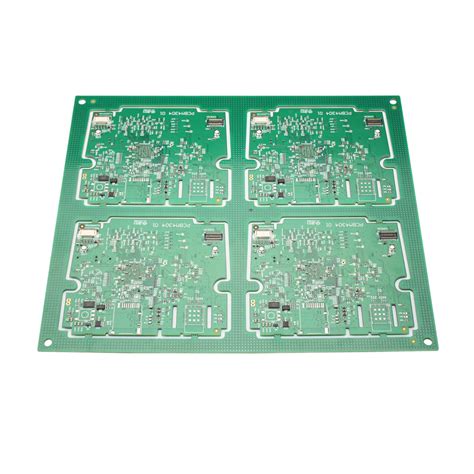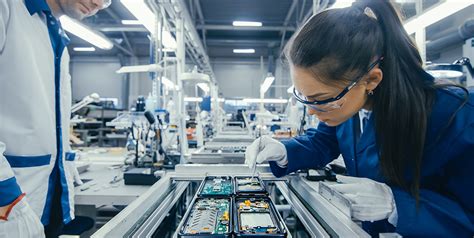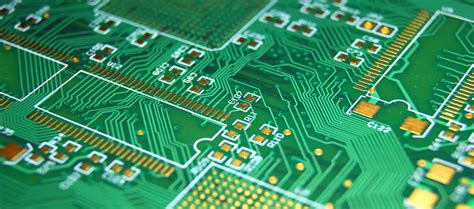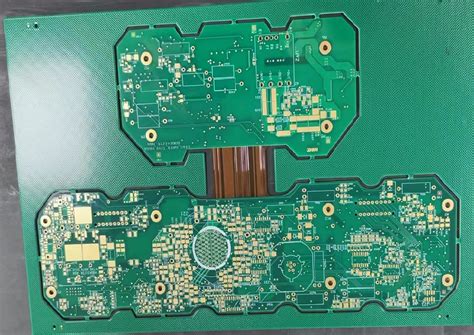Mastering the Art of Circuits Assembly: Essential Techniques Revealed
Key Takeaways
Understanding the intricacies of pcb assembly is crucial for anyone looking to excel in electronic projects. Mastering the art of pcba involves grasping essential concepts that lay the groundwork for effective work. Start by familiarizing yourself with the fundamentals of circuits assembly, which include knowing the various components, their functions, and how they interact within a circuit. Familiar tools such as soldering irons and pre-prepared pcb boards can significantly enhance your efficiency.
Incorporating robust step-by-step techniques for soldering will elevate your craftsmanship, ensuring that connections are solid and reliable. Moreover, applying best practices in circuit layout and design can streamline your assemblies and improve performance. Should you encounter challenges, having a troubleshooting mindset is key to addressing common issues that arise during pcba projects.
As you progress, exploring advanced techniques will prepare you to tackle more complex assemblies with confidence. Lastly, always prioritize safety precautions, as successful assembly not only focuses on precision but also on maintaining a safe workspace. By integrating these insights into your workflow, you will undoubtedly see improvement in both productivity and accuracy in your circuits assembly efforts.
Understanding the Fundamentals of Circuits Assembly
Circuits assembly is a crucial step in the development of electronic devices, requiring a solid grasp of both theoretical knowledge and practical skills. At its core, pcb assembly involves the careful arrangement and connection of various components on a printed circuit board (PCB). This process includes understanding the roles of resistors, capacitors, diodes, and integrated circuits to create effective pcba designs that meet specific functional and performance criteria.
To begin with, it is essential to familiarize yourself with circuit symbols and schematics. This knowledge aids in recognizing how components fit together within a circuit layout. Mastery of these fundamentals ensures that when you approach more complex assemblies, you can do so with confidence and precision. Additionally, understanding how current flows through a circuit can help troubleshoot common issues that may arise during assembly.
“Take the time to practice basic skills like soldering and component placement before tackling advanced projects.”
By doing so, you will not only enhance your proficiency but also significantly reduce the likelihood of errors in your future endeavors. With these fundamentals in place, you will be better equipped to explore advanced techniques for pcb assembly which involve multilayer boards or surface mount technology (SMT). Remember, investing time in mastering these basics is key to elevating your overall skills in circuits assembly.
Essential Tools for Efficient Circuits Assembly
When embarking on pcb assembly, having the right tools is paramount to achieve both efficiency and precision. The following list highlights some of the essential tools that every practitioner should consider:
| Tool | Purpose |
|---|---|
| Soldering Iron | For connecting electronic components securely. |
| Desoldering Pump | Essential for correcting mistakes by removing excess solder. |
| Tweezers | Helps in handling small components during pcba tasks. |
| Wire Cutters | For trimming excess leads after soldering. |
| Multimeter | Assists in testing voltage, current, and continuity in circuits. |
| PCB Holder/Clamp | Stabilizes the board during assembly for easier work. |
Using tools like a soldering iron and a desoldering pump not only improves the accuracy of your connections but also minimizes the risk of damaging sensitive components. Furthermore, a reliable multimeter allows for quick diagnostics, ensuring each connection is correct before final assembly.
In addition to basic tools, consider investing in specialized equipment such as a hot air rework station if you’re dealing with more advanced circuits assembly tasks or projects requiring surface mount technology (SMT). The right blend of fundamental and advanced tools will undoubtedly enhance your skills and ensure successful outcomes in your electronic projects.
Step-by-Step Guide to Soldering Techniques
Soldering is a critical skill in the world of pcb assembly that can significantly impact the overall quality and reliability of your electronic projects. To start, ensure you have all the necessary tools, such as a soldering iron, solder wire, and flux. The soldering iron should be preheated to an appropriate temperature to maximize efficiency.
Begin by cleaning the surfaces on the printed circuit board (PCB) where you will be working. This helps in achieving a strong bond between components and the board. Once prepared, apply a small amount of flux to each joint; this will help the solder flow smoothly. When you place components into their designated holes on the PCB, ensure they are aligned correctly before proceeding with the soldering.
As you apply heat with your soldering iron to both the pin of the component and the PCB pad simultaneously, introduce your solder wire to create a seamless connection. Allow it to melt and flow into place, covering both surfaces adequately—this is where precision is vital. Once cooled, inspect each joint for quality; strong joints will have a shiny appearance without any excess solder or bridges connecting adjacent pads.
Furthermore, practice is key in mastering these techniques; starting with simpler projects can build confidence as you advance towards more complex pcba tasks. Understanding these steps not only ensures efficient soldering but also enhances your skills for safer and reliable circuit assemblies in your journey through circuits assembly.
Best Practices for Circuit Layout and Design
Effective circuit layout and design are critical components in pcb assembly that directly influence the overall functionality and reliability of electronic devices. One of the foremost practices is to ensure a clear and organized schematic diagram, which serves as the blueprint for your project. Maintaining consistent signal integrity through well-planned traces is essential; this includes minimizing sharp angles in the routing to reduce potential electromagnetic interference. It is also recommended to prioritize a proper ground plane as it helps in preventing noise and ensures a more stable pcba process.
Additionally, choosing the right components and thoughtfully allocating sufficient space between them can prevent overheating issues, which may arise from poor thermal management. Always consider component placement strategically to enhance accessibility for soldering while also thinking about potential revisions or upgrades. Furthermore, layer stacking can dramatically improve compactness in designs, particularly for complex assemblies.
While implementing these layout practices, it’s advisable to run simulations to predict how the circuit will behave under various conditions. Doing so allows you to make informed decisions early in the design phase, ultimately streamlining the pcb assembly process when it comes time for production. Focusing on these best practices not only enhances your current project but lays a solid foundation for future ventures into advanced pcba projects.
Troubleshooting Common Circuits Assembly Issues
When working on pcb assembly and pcba, encountering issues is a common experience for both novices and seasoned professionals alike. Identifying these problems promptly can save both time and resources. A frequent issue is poor solder joints, which may result from inadequate heating or insufficient solder material. It’s essential to ensure that the components are properly positioned and that the solder flows evenly, creating a reliable connection. Additionally, misaligned circuit layouts can lead to short circuits, affecting the performance of the entire assembly. Regularly checking alignment with a magnifying tool can help catch these mistakes early on. Another common challenge is dealing with component failure due to static discharge or overheating during assembly; implementing proper static control measures and regular temperature monitoring can mitigate these risks. Finally, having a systematic approach to diagnosing issues—such as starting with visual inspections followed by continuity checks—will enhance your troubleshooting efficiency in pcb assembly projects. By utilizing these measures, you elevate not only your skills but also the reliability of your electronic creations.
Advanced Techniques for Complex Assemblies
As the complexity of electronic projects increases, mastering advanced techniques for pcb assembly becomes essential. One of the cornerstones of effective pcba is the understanding of multilayer boards, which require precise layer alignment and soldering methods to ensure optimal conductivity and functionality. Utilizing advanced soldering tools, such as hot air rework stations and precision soldering tips, can significantly improve your ability to manipulate delicate components without causing damage. Additionally, implementing proper thermal management techniques is crucial; overheating can lead to capacitance issues and component failure. It’s also beneficial to explore automated processes like pick-and-place systems for intricate assemblies that demand high-speed efficiency. Beyond mere assembly, adopting a strategic approach to circuit layout can facilitate easier troubleshooting later on, helping you anticipate potential problem areas before they manifest. Overall, delving into these advanced techniques not only enhances the quality of your pcb assemblies but also cultivates a deeper understanding of electronic design principles that lead to innovative solutions in your projects.
Safety Precautions in Circuits Assembly
When engaging in pcb assembly, safety must be a primary concern to protect both the assembler and the integrity of the components involved. First and foremost, it’s crucial to work in a well-ventilated area, as fumes produced during soldering can be hazardous. Always wear appropriate personal protective equipment (PPE), such as safety goggles and heat-resistant gloves, to minimize the risk of injury from splashes or burns. It’s also advisable to keep your workspace organized, as clutter can lead to accidents or damage to sensitive electronic parts.
Moreover, understanding the correct handling techniques for assemblies like pcba is vital; components should be handled with anti-static tools to prevent electrostatic discharge, which can damage sensitive equipment. Additionally, ensure that all tools are in good condition and properly insulated. Before starting any assembly project, review all safety guidelines related to soldering and general workspace management. By adhering to these precautions, you not only protect yourself but also ensure quality and precision in your circuits assembly projects.
Case Studies: Success Stories in Circuits Assembly
In examining successful implementations of pcb assembly, we uncover valuable lessons and strategies that have led to remarkable outcomes. One notable case involves a startup that aimed to optimize their pcba process. By adopting advanced soldering techniques and integrating reliable solder masks, they not only improved the quality of their products but also decreased turnaround times significantly. Additionally, a major electronics manufacturer shared insights on machinery upgrades, which enhanced their circuit layout efficiency, showcasing how investing in essential tools can yield high returns. Another inspiring example comes from an educational institution that collaborated with industry partners to create a hands-on circuits assembly program. This initiative not only trained students in modern techniques but also resulted in several successful projects, allowing students to showcase their skills through real-world applications of pcb assembly. By learning from these success stories, individuals and organizations alike can refine their practices and elevate the standard of electronic engineering projects.
Conclusion
In mastering the art of circuits assembly, one can hardly overstate the importance of effective pcb assembly processes. The integration of essential techniques into your routine can significantly elevate one’s capabilities in this field. Whether you are working on a simple project or engaging in more complex pcba tasks, understanding the intricacies involved is crucial. The knowledge gained from employing best practices, such as ensuring proper layout and design, can lead to enhanced efficiency and fewer errors. Moreover, being adept at troubleshooting common issues will save time and resources, allowing for smoother progress in projects. By embracing both fundamental and advanced techniques, individuals can develop a solid foundation that enables them to tackle a variety of challenges in circuits assembly with confidence. Ultimately, continuous learning and adaptability are key to excelling in this fascinating domain.
FAQs
What is PCB assembly?
PCB assembly refers to the process of soldering electronic components onto a printed circuit board (PCB) to create a functioning electronic device. This process can be performed manually or through various automated techniques.
What is the difference between PCB and PCBA?
While PCB (Printed Circuit Board) is the base that holds electronic components, PCBA (Printed Circuit Board Assembly) refers to the final assembly of a PCB with all components soldered onto it. Thus, PCBA is essentially a fully functional board ready for integration into larger systems.
What essential tools are needed for effective circuits assembly?
To efficiently assemble circuits, common tools include a soldering iron, wire cutters, tweezers, and multimeters. Investing in quality tools enhances precision and reduces errors in PCB assembly.
How do I troubleshoot common issues in circuit assemblies?
Common troubleshooting techniques include checking for cold solder joints, ensuring that components are placed correctly according to the schematic, and using a multimeter to verify connections. Addressing these issues promptly will help maintain reliability in pcba.
Are there safety precautions I should take during circuits assembly?
Yes! Ensure proper ventilation when soldering, wear safety glasses to protect your eyes from flying debris, and handle all tools with care to avoid accidents.






